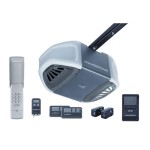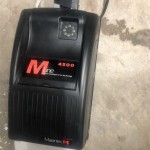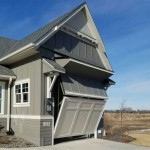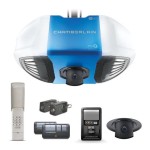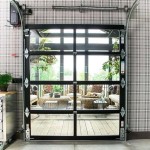Paint Chips for Garage Floors: Enhancing Durability and Aesthetics
Garage floors are subjected to significant wear and tear. From vehicular traffic and dropped tools to chemical spills and fluctuating temperatures, the surfaces endure a constant barrage of potential damage. Consequently, selecting the appropriate flooring treatment is crucial to ensure longevity, durability, and maintain an aesthetically pleasing appearance. One popular solution gaining traction in both residential and commercial settings is the application of paint chips, also known as decorative flakes or epoxy color flakes, to garage floor coatings.
Paint chips offer a versatile and resilient method for enhancing the performance and visual appeal of garage floor coatings. These chips, typically made of vinyl, acrylic, or epoxy, are broadcast onto a wet epoxy or polyaspartic base coat. They serve multiple purposes, including improving the coating's resistance to abrasion, masking minor imperfections in the concrete substrate, and providing a decorative finish that can be customized to suit various design preferences. The subsequent application of a clear topcoat seals the chips, creating a seamless and durable surface.
Benefits of Using Paint Chips on Garage Floors
The incorporation of paint chips into garage floor coatings presents numerous advantages that extend beyond purely aesthetic considerations. These benefits contribute to a more durable, safer, and visually appealing garage environment.
Firstly, paint chips significantly enhance the coating's resistance to abrasion and impact. The flakes act as a reinforcement matrix within the epoxy or polyaspartic resin, distributing stress and preventing concentrated wear in specific areas. This is especially crucial in high-traffic zones or areas where heavy objects are frequently moved or dropped. The added protection reduces the likelihood of chipping, cracking, and peeling, thereby extending the lifespan of the flooring system and minimizing the need for frequent repairs or recoating.
Secondly, paint chips effectively mask minor imperfections in the underlying concrete substrate. Garage floors often exhibit surface irregularities, such as hairline cracks, pitting, or minor staining. Broadcasting paint chips across the wet coating effectively conceals these blemishes, creating a more uniform and visually appealing surface. This eliminates the need for extensive concrete preparation, such as grinding or patching, which can be costly and time-consuming. The ability to camouflage imperfections simplifies the installation process and reduces overall project expenses.
Thirdly, paint chips enhance the slip resistance of the finished floor, creating a safer environment for users. The textured surface created by the embedded flakes provides increased traction, reducing the risk of slips and falls, particularly when the floor is wet or oily. This is particularly important in garages where spills are common and where individuals may be carrying heavy or bulky items. The increased slip resistance contributes to a safer working environment and minimizes the potential for accidents.
Finally, the availability of a wide range of colors, sizes, and textures of paint chips offers virtually limitless design possibilities. Homeowners and business owners can create custom floor finishes that complement their personal style or brand identity. From subtle, monochromatic blends to bold, multi-colored patterns, the design options are extensive. This versatility allows for the creation of unique and visually appealing garage floors that enhance the overall aesthetic of the property.
Types of Paint Chips Available
Paint chips are available in a variety of materials, each with its own characteristics and performance attributes. The choice of material depends on factors such as budget, desired durability, and aesthetic preferences. The three primary types of paint chips include vinyl, acrylic, and epoxy.
Vinyl chips are the most economical option. They are typically made from thin sheets of pigmented vinyl that are shredded into flakes of various sizes. Vinyl chips offer good color retention and are resistant to fading. However, they are less durable than acrylic or epoxy chips and may be more susceptible to tearing or damage from heavy impact or abrasion. Despite their lower durability, vinyl chips are a suitable choice for residential garages with moderate traffic and minimal exposure to harsh chemicals.
Acrylic chips provide a balance between cost and performance. They are made from tougher acrylic polymers, offering improved durability and chemical resistance compared to vinyl chips. Acrylic chips are also more resistant to heat and UV degradation, making them a suitable option for garages that are exposed to direct sunlight. They are available in a wide range of colors and sizes, providing ample design flexibility. Acrylic chips represent a solid middle-ground choice for homeowners seeking a durable and aesthetically pleasing floor finish without exceeding their budget.
Epoxy chips are the most durable and chemically resistant option. They are made from epoxy resins, which provide exceptional strength and resistance to abrasion, impact, and chemical spills. Epoxy chips are also highly resistant to heat and UV degradation, making them ideal for demanding environments. While epoxy chips are the most expensive option, their superior performance characteristics make them a worthwhile investment for commercial garages, auto repair shops, and other areas where heavy use and chemical exposure are common. The enhanced durability of epoxy chips extends the lifespan of the floor coating and reduces the need for frequent maintenance or replacement.
Beyond the material composition, paint chips are also available in different sizes and shapes. Smaller chips create a smoother, more uniform finish, while larger chips provide a more textured and visually dynamic appearance. The shape of the chips can also vary, with options ranging from irregular flakes to rectangular pieces. Experimenting with different sizes and shapes can create unique and customized floor designs.
Application Process for Paint Chips
The application of paint chips to garage floors requires careful preparation and proper technique to ensure a durable and aesthetically pleasing result. The process typically involves several steps, including surface preparation, basecoat application, chip broadcasting, and topcoat sealing.
Thorough surface preparation is critical for ensuring proper adhesion of the coating system. The concrete floor should be clean, dry, and free of any contaminants such as oil, grease, dust, or debris. Existing coatings or sealers must be removed through mechanical means, such as grinding or shot blasting. Any cracks or imperfections in the concrete should be repaired prior to coating application. Once the surface is clean and repaired, it should be etched with an acid solution or a mechanical grinder to create a porous surface that will promote better adhesion of the epoxy or polyaspartic base coat.
The basecoat, typically consisting of epoxy or polyaspartic resin, is applied to the prepared concrete surface. The basecoat serves as the foundation for the paint chips and provides a strong bond between the chips and the concrete substrate. The thickness of the basecoat should be sufficient to fully embed the paint chips without leaving any exposed concrete. The basecoat should be applied evenly and consistently to ensure a uniform finish.
While the basecoat is still wet, the paint chips are broadcast across the surface. The chips should be applied generously to achieve full coverage, ensuring that the basecoat is completely obscured. The method of broadcasting the chips can vary, with options including hand broadcasting, using a seed spreader, or employing a specialized chip dispenser. The goal is to achieve an even distribution of chips across the entire floor surface. Once the chips have been broadcast, they should be allowed to settle into the wet basecoat.
After the basecoat has cured, typically overnight, the excess paint chips that have not adhered to the coating are removed. This can be accomplished by scraping or sweeping the floor. A scraper is often used to remove any loosely adhering chips and ensure a smooth surface. This step is essential for creating a uniform and aesthetically pleasing finish. The removed chips can be saved and reused for future applications or touch-ups.
Finally, a clear topcoat is applied to seal the paint chips and provide added protection against abrasion, chemicals, and UV degradation. The topcoat should be specifically formulated for use over epoxy or polyaspartic coatings and should provide a durable and scratch-resistant finish. The topcoat should be applied evenly and consistently to ensure complete encapsulation of the paint chips. Multiple coats of topcoat may be necessary to achieve the desired level of protection and gloss.
Proper curing time is essential for the coating system to fully harden and develop its optimal performance characteristics. The curing time will vary depending on the type of coating used and the ambient temperature and humidity. It is important to follow the manufacturer's recommendations for curing time and to avoid subjecting the floor to heavy traffic or chemical exposure until it is fully cured.
Factors to Consider When Choosing Paint Chips
Selecting the appropriate paint chips for a garage floor requires careful consideration of several factors, including the intended use of the garage, the desired aesthetic, and the budget constraints. Thoughtful planning will ensure a successful and long-lasting floor coating.
The intended use of the garage is a primary consideration. Garages that are subjected to heavy traffic, frequent chemical spills, or heavy equipment should utilize more durable paint chips, such as epoxy, and a thicker basecoat and topcoat system. Residential garages with moderate traffic may be suitable for less expensive options, such as vinyl or acrylic chips. The level of wear and tear that the floor will endure dictates the required level of protection provided by the paint chips and coating system.
The desired aesthetic is another important factor. Paint chips are available in a wide array of colors, sizes, and textures, allowing for virtually limitless design possibilities. Consider the overall style of the property and select paint chips that complement the existing décor. It is also important to consider the desired level of reflectivity of the floor. Light-colored chips can brighten up a dark garage, while darker colors can provide a more sophisticated look. Samples of different chip blends should be viewed under the actual lighting conditions of the garage to ensure that the desired aesthetic is achieved.
Budget constraints are also a significant factor. The cost of paint chips varies depending on the material composition, size, and color. Epoxy chips are generally more expensive than vinyl or acrylic chips. It is important to establish a budget and select paint chips that fall within the allocated funds. However, it is also important to consider the long-term cost of the flooring system. Investing in a more durable system upfront may save money in the long run by reducing the need for frequent repairs or recoating. Balancing initial cost with long-term durability is crucial for making a sound financial decision.
Finally, the skill level of the installer should be considered, especially for DIY projects. Applying paint chips requires some degree of skill and experience to achieve a professional-looking finish. If the installer is inexperienced, it may be advisable to choose a simpler chip blend and a more forgiving coating system. Alternatively, hiring a professional installer can ensure that the job is done correctly and that the floor coating will perform as expected. While professional installation adds to the overall cost, it can provide peace of mind and guarantee a quality outcome.

Decorative Flooring Chips Flakes Available By The Bucket Slide Lok Garage Floors Storage Systems

Paint Chips Electric Blue Blend Durable Vibrant Finish

Mica Metallic Flakes For Polyaspartic Floor Coatings Real Natural Crystalline Beauty

Moon Decorative Concrete Floor Coatings

How To Choose The Right Color Chips

5 Lb Blue Sapphire Vinyl Decorative Color Chips 842315055166 The Home

Flake Floor Decorative Uniform Durable And Efficient

Paint Chips Harley Chrome Blend Decorative Floor

Color Chips For Floors Decorative Garage

Vinyl Flake Chip Concrete Garage Floor Paint Coating Pigment Kit Ebay
See Also

